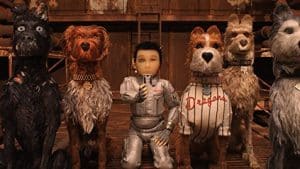
Isle of Dogs
Japan, 2037. Twelve-year-old Atari Kobayashi goes in search of his beloved dog after, by an executive decree due to a canine flu, all the dogs of Megasaki City are sent into exile in a large landfill called Trash Island. Atari starts alone in his Junior-Turbo Prop and flies across the river in search of his watchdog, Spots. There, with the help of a bunch of new four-legged friends, begins a journey aimed at their liberation.
Wes Anderson, film after film, is refining a peculiar feature that now ranks it, rightfully, among the Masters of contemporary cinema.
He is practically one of the very few directors, but certainly the one with the most productive results of meaning, able to saturate the shots with a myriad of elements without getting lost in a baroque or complacency for themselves. Except then, in the next frame, empty the screen to entrust it to a single element in a large space. In its cinema, the staging counts infinitely more than the story, however, however, it does not simply act as a narrative carpet for images. As in this case, where it is told of not a ‘wall’ but of something similar: an island where you can remove the undesirable. Starting from a real pretext (canine flu) but pretending that no remedy is possible in and that therefore the only solution to ‘protect’ is rejection.
Contextualizing all this in the Japanese context does not mean to avoid Anderson’s direct attack on his country’s politics. As he descended into the deep sea with Steve Zissou or traveled in the Darjeeling with the Whitman brothers and then snapped into the corridors and rooms of the Grand Budapest Hotel, he now wants to experiment again by being accompanied by the small Atari.








